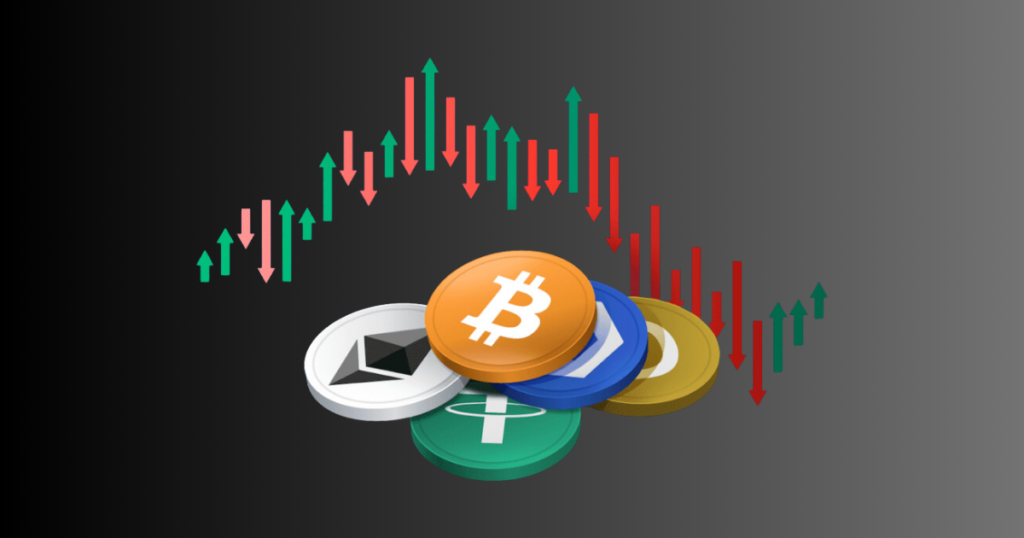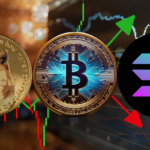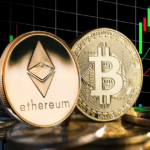What are the 10 most profitable Cryptocurrency Right Now?

What Is Cryptocurrency?
Cryptocurrency, the game-changers in finance, operate on blockchain’s decentralized power, sidestepping banks and governments. With a bustling market featuring 24,630 diverse projects, the cryptocurrency ecosystem is set to make waves, with a projected valuation of $4.94 billion by 2030. This rapid ascent reflects the increasing acceptance of digital assets, from stalwarts like Bitcoin to innovative tokens, reshaping traditional financial paradigms and inviting both excitement and scrutiny.
cryptocurrencies offer users not just a financial tool but a glimpse into a future where transactions are transparent, secure, and liberated from traditional constraints. The ongoing interplay between regulatory frameworks and technological advancements adds an element of unpredictability to the journey. As we navigate this transformative landscape, the allure of cryptocurrencies extends beyond financial gains, prompting conversations about the very nature of money and its role in our evolving world.
1. Bitcoin (BTC)
Bitcoin (BTC) is the first cryptocurrency, created by Satoshi Nakamoto in 2009. BTC, like most cryptocurrencies, is based on a blockchain, which is a distributed ledger that logs transactions across thousands of computers. Because changes to the distributed ledgers must be confirmed by solving a cryptographic problem, a process known as proof of work, Bitcoin is maintained secure and free of fraud.
Bitcoin’s price has risen dramatically as it has become a household brand. In May 2016, you could buy one Bitcoin for around $500. As of January 30, 2024, the price of one Bitcoin was approximately $43,379. That’s an increase of 8,576%.
Market Size: $850.8 billion
2. Ethereum (ETH)
Ethereum, a cryptocurrency and a blockchain platform, is popular among programmers due to its potential uses, such as smart contracts that run automatically when certain conditions are satisfied and non-fungible tokens (NFTs).
Ethereum has also seen remarkable development. Between April 2016 to the end of January 2024, its price increased by 20,931%, from roughly $11 to around $2,313.
Market size: $278.0 billion
3. Tether (USDT)
Tether (USDT), unlike some other types of cryptocurrency, is a stablecoin, which means it is backed by fiat currencies such as the US dollar and the Euro and has a theoretical value equivalent to one of those denominations. In theory, this means that Tether’s value is expected to be more consistent than that of other cryptocurrencies, and it is preferred by investors who are concerned about the extreme volatility of other coins.
Market size: $96.0 billion
4. Binance Coin (BNB)
Binance Coin (BNB) is a cryptocurrency that allows you to trade and pay fees on Binance, one of the world’s largest cryptocurrency exchanges. Since its inception in 2017, Binance Coin has evolved beyond simply facilitating trades on Binance’s exchange platform. It can now be used to trade, process payments, and even book travel arrangements. It can also be traded or exchanged for other types of cryptocurrency, such as Ethereum and Bitcoin.
BNB’s price in 2017 was only $0.10. By late January 2024, its price had risen to approximately $309, representing a 308,904% increase.
Market size: $46.2 billion
5. Solana (SOL)
Developed to help power decentralized finance (DeFi) uses, decentralized apps (DApps), and smart contracts, Solana runs on a unique hybrid proof-of-stake and proof-of-history mechanisms to process transactions quickly and securely. SOL, Solana’s native token, powers the platform.
When it launched in 2020, SOL’s price started at $0.77. By late January 2024, its price was around $105.42, a gain of 13,590%.
Market size: $45.9 billion
6. XRP (XRP)
Created by some of the same founders as Ripple, a digital technology and payment processing company, XRP can be used on that network to facilitate exchanges of different currency types, including fiat currencies and other major cryptocurrencies.
At the beginning of 2017, the price of XRP was $0.006. As of Jan. 30, 2024, its price reached $0.53, equal to a rise of 8,670%.
Market size: $28.6 billion
7. U.S. Dollar Coin (USDC)
Similar to Tether, USD Coin (USDC) belongs to the stablecoin category, leveraging the backing of U.S. dollars to maintain a 1 USD to 1 USDC ratio. This stability provides users with a reliable digital representation of traditional currency. USDC operates on the Ethereum blockchain, harnessing the power of this decentralized platform to facilitate transactions globally. The use of the USD Coin extends beyond borders, offering a convenient and stable means for individuals and businesses to engage in international transactions with the assurance of a fixed value tied to the U.S. dollar.
Market size: $26.4 billion
8. Cardano (ADA)
Somewhat later to the crypto scene, Cardano (ADA) is notable for its early embrace of proof-of-stake validation. This method expedites transaction time and decreases energy usage and environmental impact by removing the competitive, problem-solving aspect of transaction verification in platforms like Bitcoin. Cardano also works like Ethereum to enable smart contracts and decentralized applications, which ADA, its native coin, powers.
Cardano’s ADA token has had relatively modest growth compared to other major crypto coins. In 2017, ADA’s price was $0.02. As of Jan. 30, 2024, its price was at $0.52. This is an increase of 2,500%.
Market size: $18.4 billion
9. Avalanche (AVAX)
Avalanche delivers two important features: fast transaction speeds and low transaction fees. AVAX also has a healthy total value locked (TVL) or amount of money deposited in decentralized finance. TVL is the total value of crypto assets deposited in a decentralized finance (DeFi) protocol, such as staking, lending, or liquidity pools.
A high TVL indicates the popularity of a protocol and the adoption rate of a particular cryptocurrency. Avalanche’s price today is $36.
Market size: $13.2 billion
10. Dogecoin (DOGE)
Dogecoin was famously started as a joke in 2013 but rapidly evolved into a prominent cryptocurrency thanks to a dedicated community and creative memes. Unlike many other cryptos, there is no limit on the number of Dogecoins that can be created, which leaves the currency susceptible to devaluation as supply increases.
Dogecoin’s price in 2017 was $0.0002. By January 2024, its price was at $0.08, up 40,368%.
Market size: $11.6 billion

Conclusion:
Cryptocurrencies, at the forefront of financial innovation, wield the decentralized power of blockchain, revolutionizing traditional finance by sidestepping the influence of banks and governments. With a diverse market boasting 24,630 projects, the cryptocurrency ecosystem is poised to reach a projected valuation of $4.94 billion by 2030, reflecting the growing acceptance and transformative potential of digital assets. Notable players like Bitcoin, Ethereum, Tether, Binance Coin, Solana, XRP, U.S. Dollar Coin (USDC), Cardano, Avalanche, and Dogecoin showcase the dynamic evolution of this space, each contributing to the reshaping of global financial paradigms.
Know More About Cryptocurrency.
FAQs:
1. What is the significance of cryptocurrencies?
Cryptocurrencies operate on blockchain technology, providing a decentralized and transparent means of conducting financial transactions. They offer users autonomy over their finances and are reshaping traditional financial paradigms.
2. How many cryptocurrency projects exist in the market?
As of now, there are 24,630 cryptocurrency projects, each contributing to the dynamic and evolving landscape of the digital financial ecosystem.
3. What is the projected valuation of the cryptocurrency market by 2030?
The cryptocurrency market is estimated to reach a substantial valuation of $4.94 billion by the year 2030, reflecting the anticipated growth and acceptance of digital assets.
4. Can cryptocurrencies be used for international transactions?
Yes, cryptocurrencies like USD Coin (USDC) leverage blockchain technology to facilitate global transactions, providing a stable and convenient means for individuals and businesses to engage in international trade.
5. How does the price of cryptocurrencies, such as Bitcoin and Ethereum, fluctuate over time?
The prices of cryptocurrencies can experience significant fluctuations. For instance, Bitcoin’s price has seen a remarkable increase, from around $500 in May 2016 to approximately $43,379 by January 30, 2024, reflecting an 8,576% rise.
6. What is the role of stablecoins like Tether and USD Coin (USDC) in the cryptocurrency market?
Stablecoins, like Tether and USD Coin (USDC), are pegged to traditional fiat currencies, providing stability in value. They are preferred by investors concerned about the volatility of other cryptocurrencies, offering a reliable digital representation of traditional currency.
7. How does Ethereum differ from Bitcoin?
Ethereum is not only a cryptocurrency but also a blockchain platform that facilitates smart contracts and non-fungible tokens (NFTs). While Bitcoin primarily serves as a digital currency, Ethereum’s blockchain has broader applications, making it popular among programmers and developers.









 Bitcoin
Bitcoin  Ethereum
Ethereum  Tether
Tether  Solana
Solana  Lido Staked Ether
Lido Staked Ether  USDC
USDC  XRP
XRP  Toncoin
Toncoin  Dogecoin
Dogecoin  Cardano
Cardano  TRON
TRON  Shiba Inu
Shiba Inu  Avalanche
Avalanche  Wrapped Bitcoin
Wrapped Bitcoin  Chainlink
Chainlink  Polkadot
Polkadot  Bitcoin Cash
Bitcoin Cash  Uniswap
Uniswap  NEAR Protocol
NEAR Protocol  Wrapped eETH
Wrapped eETH  Litecoin
Litecoin  Polygon
Polygon  Dai
Dai  LEO Token
LEO Token  Pepe
Pepe  Internet Computer
Internet Computer  Fetch.ai
Fetch.ai  Ethena USDe
Ethena USDe  Renzo Restaked ETH
Renzo Restaked ETH  Ethereum Classic
Ethereum Classic  Aptos
Aptos  Monero
Monero  Hedera
Hedera  Render
Render  Cosmos Hub
Cosmos Hub  Stellar
Stellar  Mantle
Mantle  Arbitrum
Arbitrum  OKB
OKB  Cronos
Cronos  Filecoin
Filecoin  Stacks
Stacks  First Digital USD
First Digital USD  Immutable
Immutable  Sui
Sui  Maker
Maker  The Graph
The Graph